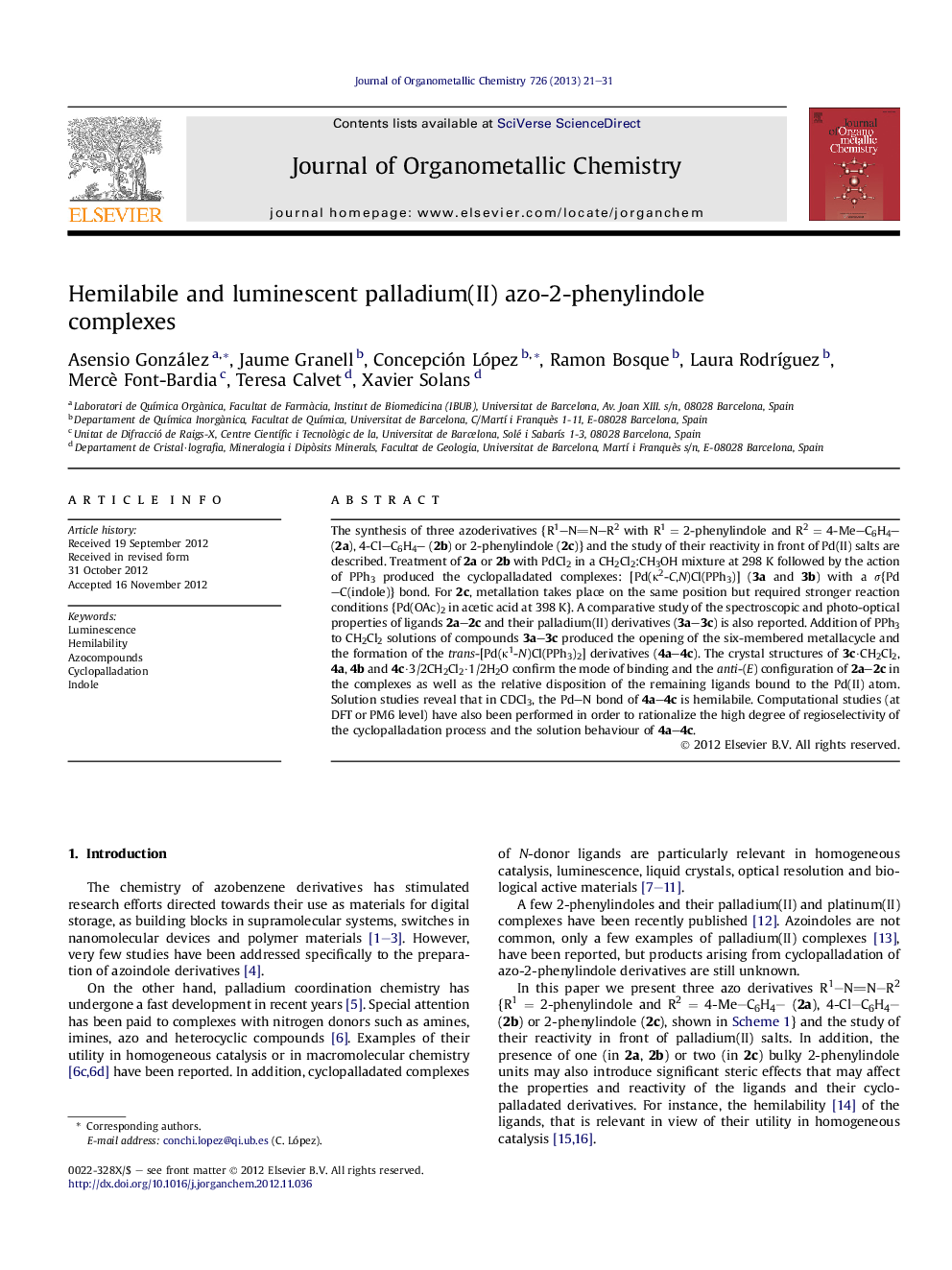| Article ID | Journal | Published Year | Pages | File Type |
|---|---|---|---|---|
| 1322881 | Journal of Organometallic Chemistry | 2013 | 11 Pages |
The synthesis of three azoderivatives {R1–NN–R2 with R1 = 2-phenylindole and R2 = 4-Me–C6H4– (2a), 4-Cl–C6H4– (2b) or 2-phenylindole (2c)} and the study of their reactivity in front of Pd(II) salts are described. Treatment of 2a or 2b with PdCl2 in a CH2Cl2:CH3OH mixture at 298 K followed by the action of PPh3 produced the cyclopalladated complexes: [Pd(κ2-C,N)Cl(PPh3)] (3a and 3b) with a σ{Pd–C(indole)} bond. For 2c, metallation takes place on the same position but required stronger reaction conditions {Pd(OAc)2 in acetic acid at 398 K}. A comparative study of the spectroscopic and photo-optical properties of ligands 2a–2c and their palladium(II) derivatives (3a–3c) is also reported. Addition of PPh3 to CH2Cl2 solutions of compounds 3a–3c produced the opening of the six-membered metallacycle and the formation of the trans-[Pd(κ1-N)Cl(PPh3)2] derivatives (4a–4c). The crystal structures of 3c·CH2Cl2, 4a, 4b and 4c·3/2CH2Cl2·1/2H2O confirm the mode of binding and the anti-(E) configuration of 2a–2c in the complexes as well as the relative disposition of the remaining ligands bound to the Pd(II) atom. Solution studies reveal that in CDCl3, the Pd–N bond of 4a–4c is hemilabile. Computational studies (at DFT or PM6 level) have also been performed in order to rationalize the high degree of regioselectivity of the cyclopalladation process and the solution behaviour of 4a–4c.
Graphical abstractTwo novel families of Pd(II) complexes with R1–NN–R2 acting as (C,Nindole)− or (C)− ligands {(3a–3c) and (4a–4c), respectively} are presented. DFT computational studies have also been performed to rationalize their solution behaviour of complexes (4a–4c).Figure optionsDownload full-size imageDownload as PowerPoint slideHighlights► Regioselective activation of σ(C–H) bonds of 2-phenylindole azocompounds. ► Highly potent luminescent palladium(II) complexes. ► Solution behaviour of the Pd(II) complexes: Experimental and DFT studies. ► Unprecedented hemilability of the Pd–P bond in [Pd{κ2-(Cindol,N)Cl(PPh3)2] compounds.
